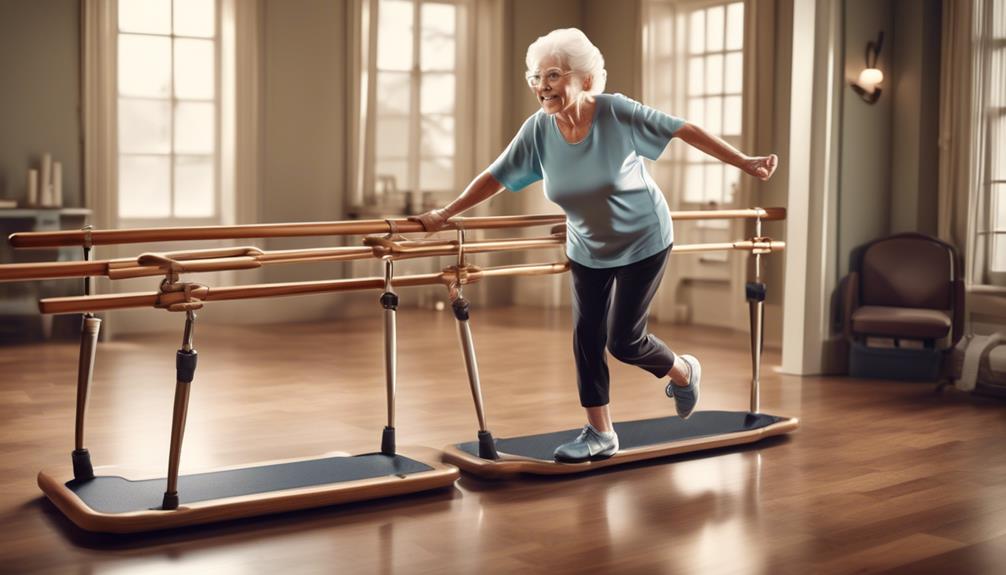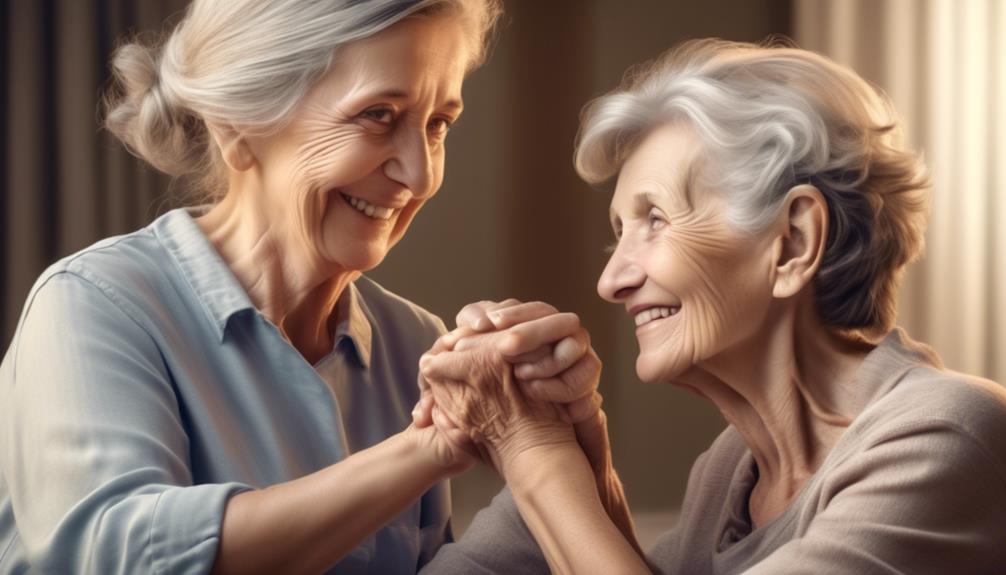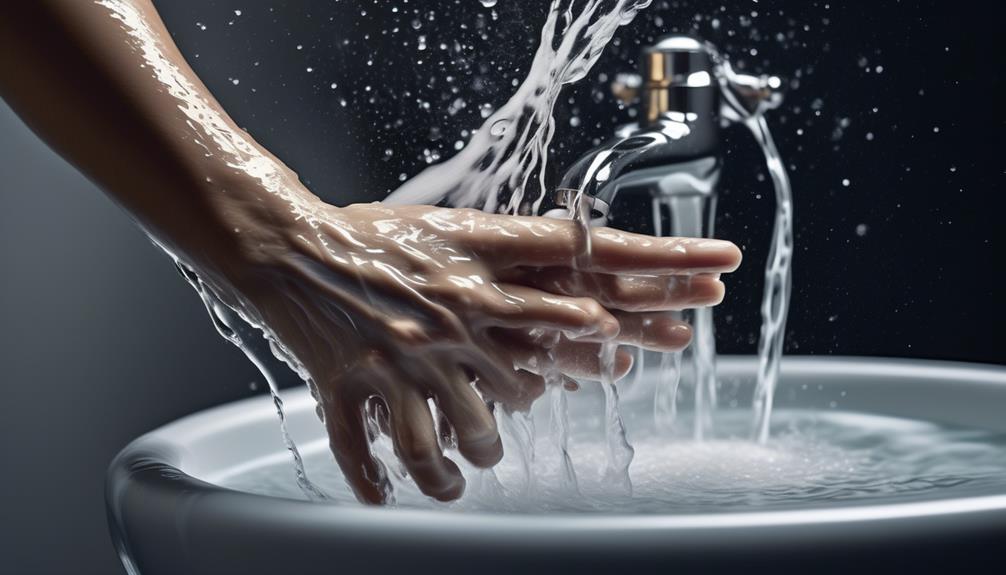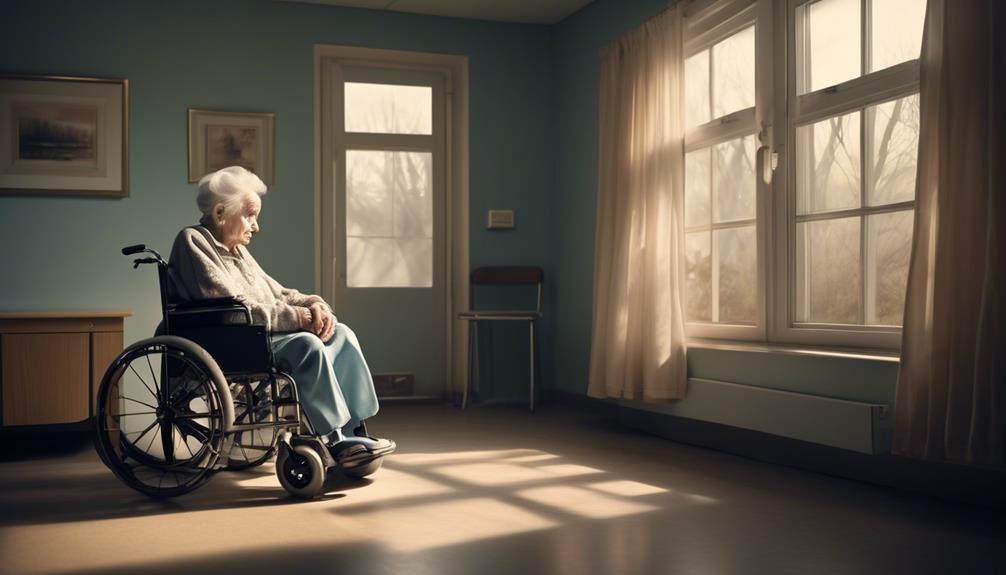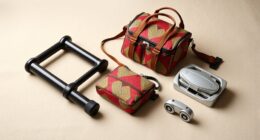Navigating the terrain of safeguarding elderly individuals from falls is akin to constructing a barrier against an invisible adversary.
The arsenal of strategies at our disposal is vast, ranging from lifestyle adjustments to environmental modifications.
These methods not only offer protection but also promote independence and quality of life for our aging population.
Let's explore these tactics together and uncover the keys to ensuring the safety and well-being of our seniors.
Key Takeaways
- Prioritize improving lighting to reduce falls risk.
- Select footwear with nonskid soles for enhanced stability.
- Utilize grab bars strategically to enhance balance and support.
- Organize living spaces and remove hazards for safer mobility.
Home Modifications for Fall Prevention
To create a safer living environment for older adults and reduce the risk of falls, implementing home modifications is essential. Simple adjustments like removing tripping hazards, installing grab bars in strategic locations, improving lighting, and organizing clutter can make a significant difference in preventing falls for elderly individuals.
Placing nonslip mats in areas prone to wetness, like the bathroom, is crucial for maintaining stability. Ensuring handrails are sturdy and well-placed along staircases provides necessary support. It's important to address loose floorboards promptly and secure carpets to prevent slips and trips.
Keeping walkways clear of obstacles and using night lights to illuminate pathways during nighttime can greatly reduce the likelihood of accidents. By making these adjustments, we not only enhance the safety of our elders but also provide them with a more comfortable and secure living space where they can move around with confidence and independence.
Importance of Regular Exercise

Improving strength and balance through regular exercise is a crucial step in reducing the risk of falls among older adults. Engaging in various forms of exercise, such as strength training and balance exercises, plays a vital role in falls prevention. These activities help enhance muscle strength, coordination, and flexibility, all of which are essential for maintaining stability and preventing accidental falls. Studies have demonstrated that older adults who participate in structured exercise programs have a lower likelihood of experiencing falls compared to those who lead a sedentary lifestyle. Additionally, exercise contributes to improved bone health, reducing the risk of fractures in the event of a fall. Tai chi, a gentle form of exercise that focuses on balance and mindfulness, has shown particular effectiveness in enhancing balance and decreasing the incidence of falls in older adults.
| Benefits of Exercise for Falls Prevention | |
|---|---|
| Improves muscle strength | Enhances coordination and flexibility |
| Promotes bone health | Reduces the risk of falls among older adults |
Choosing Proper Footwear
When selecting appropriate footwear for older adults to prevent falls, prioritize flat, sturdy shoes with nonskid soles for enhanced stability and safety. Sensible shoes play a crucial role in reducing the risk of slips and falls among older adults. Here are some essential factors to consider when choosing proper footwear:
- Opt for flat shoes to promote better balance and prevent tripping hazards.
- Look for sturdy shoes that provide adequate support and protect the feet.
- Choose footwear with nonskid soles to improve traction on different surfaces.
- Prioritize shoes with proper arch support to enhance comfort and stability while walking.
- Select shoes with cushioning to reduce joint pain and improve overall mobility.
Eliminating Hazards in Living Spaces

In creating a safe living environment for older adults, we prioritize the elimination of hazards such as loose rugs and clutter to prevent falls and promote overall well-being. By removing trip hazards like loose rugs and clutter, we can significantly reduce the risk of falls in older adults.
It's essential to secure loose floorboards and carpets promptly to prevent accidental slips and falls in living spaces. Utilizing nonslip mats in high-risk areas such as bathrooms can enhance safety and prevent falls effectively.
Organizing living spaces to ensure easy access to daily necessities can help older adults move around safely and independently. Clearing walkways of obstacles like cords and clutter is essential for creating a safe environment and preventing falls in older adults.
Use of Assistive Devices for Safety
To enhance safety and reduce the risk of falls in older adults, incorporating assistive devices like canes, walkers, and grab bars is crucial. These devices provide essential stability, support, and balance for older adults, significantly reducing the likelihood of falls.
Here are some key points to consider when using assistive devices:
- Canes offer stability and support while walking, aiding those with mild balance issues.
- Walkers provide increased support, helping older adults with significant mobility challenges maintain balance.
- Grab bars strategically placed in bathrooms and stairwells enhance stability and prevent slips in high-risk areas.
- Proper training and fitting of assistive devices are vital to ensure their effectiveness in fall prevention.
- Regular maintenance and assessment of these devices are necessary to guarantee continued support and safety for older adults.
Frequently Asked Questions
How Can Older Adults Prevent Falls?
To prevent falls, we focus on several key areas:
- Exercise: Regular physical activity strengthens muscles and improves balance.
- Medication review: Managing medications reduces side effects that may lead to falls.
- Home safety: Home hazard assessments eliminate obstacles.
- Proper footwear: Nonskid footwear prevents slips.
- Personalized advice from healthcare providers: Seeking guidance tailors strategies to individual risk factors.
These steps empower older adults to maintain safety and independence in their daily lives.
What Are the 5 P's of Fall Prevention?
The 5 P's of fall prevention are crucial for older adults. They include:
- Provider visits for assessing risks
- Physical Activity for strength
- Proper Footwear
- Home Hazard Removal
- Adequate Lighting
These strategies target medication, muscle strength, balance, home safety, and visibility. By addressing these areas, we can help prevent falls.
Provider appointments offer tailored prevention plans, while activities like tai chi enhance balance. Ensuring proper footwear, a hazard-free home, and good lighting create a safe environment.
What Are the 4 P's of Fall Prevention?
Oh, the 4 P's of fall prevention?
Personal, Physical, Psychological, and Pharmacological factors play a big role in older adults' risk of falls.
Personal factors like age and previous falls, Physical factors such as muscle weakness, Psychological factors including fear of falling, and Pharmacological factors related to medications can all contribute.
Understanding and addressing these areas can help tailor interventions to reduce fall risks and enhance safety for older adults.
What 5 Interventions Would Be Appropriate to Prevent Falls?
To prevent falls, we recommend focusing on:
- Tailored exercise programs
- Medication reviews
- Home modifications
- Proper lighting
- Wearing nonskid shoes
These interventions can significantly reduce fall risks and enhance stability in older adults. By incorporating these strategies, we can create a safer environment that promotes independence and well-being for our loved ones.
Let's prioritize these interventions to ensure a secure and stable living space for older adults.
Conclusion
In conclusion, it's crucial to take proactive steps in preventing falls among older adults.
Did you know that falls are the leading cause of injury-related deaths in individuals aged 65 and older?
By making simple changes like modifying your home, staying active, wearing proper footwear, and removing hazards, you can significantly reduce the risk of falling.
Let's prioritize safety and well-being to enjoy a healthy and independent lifestyle as we age.
